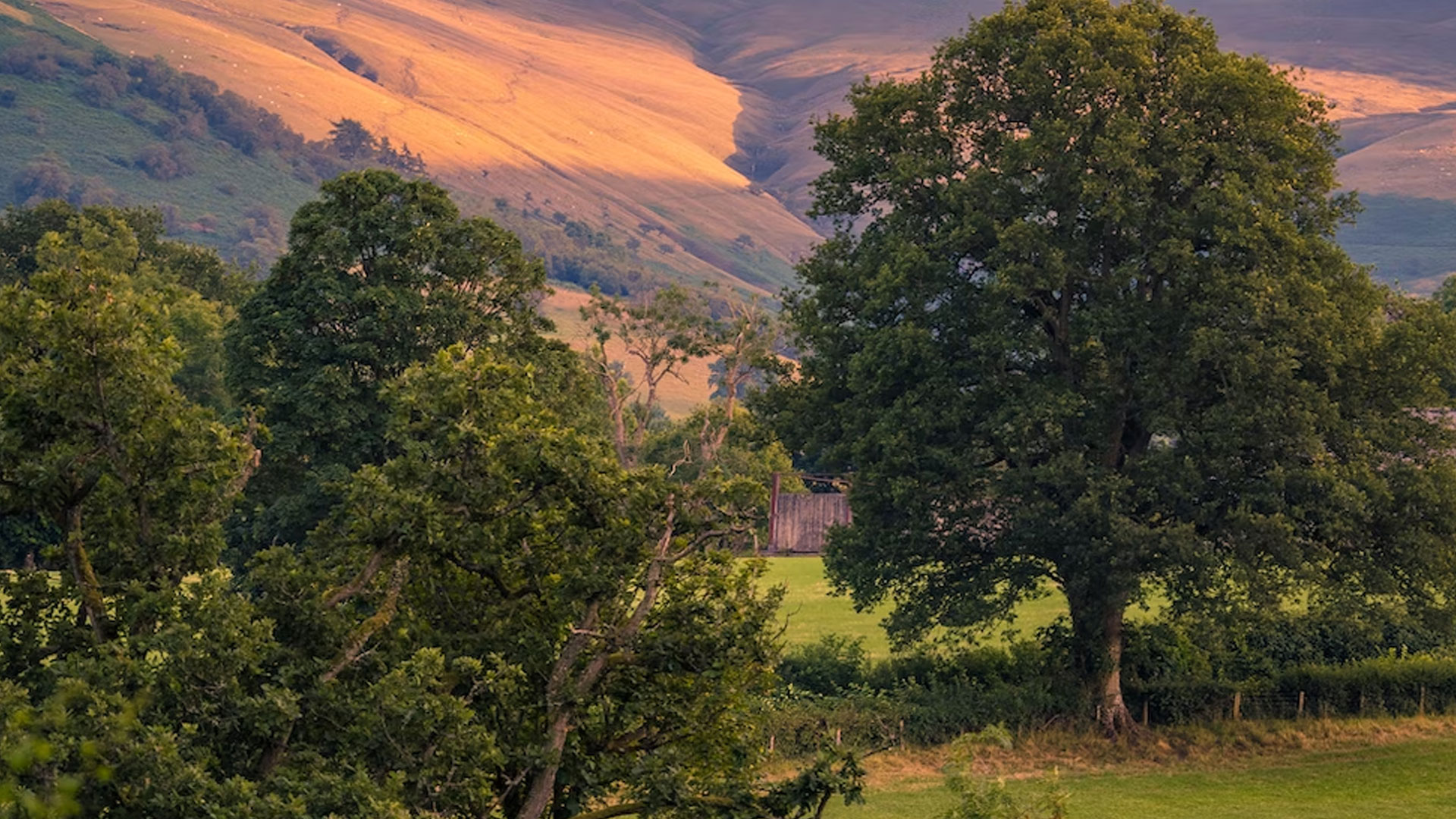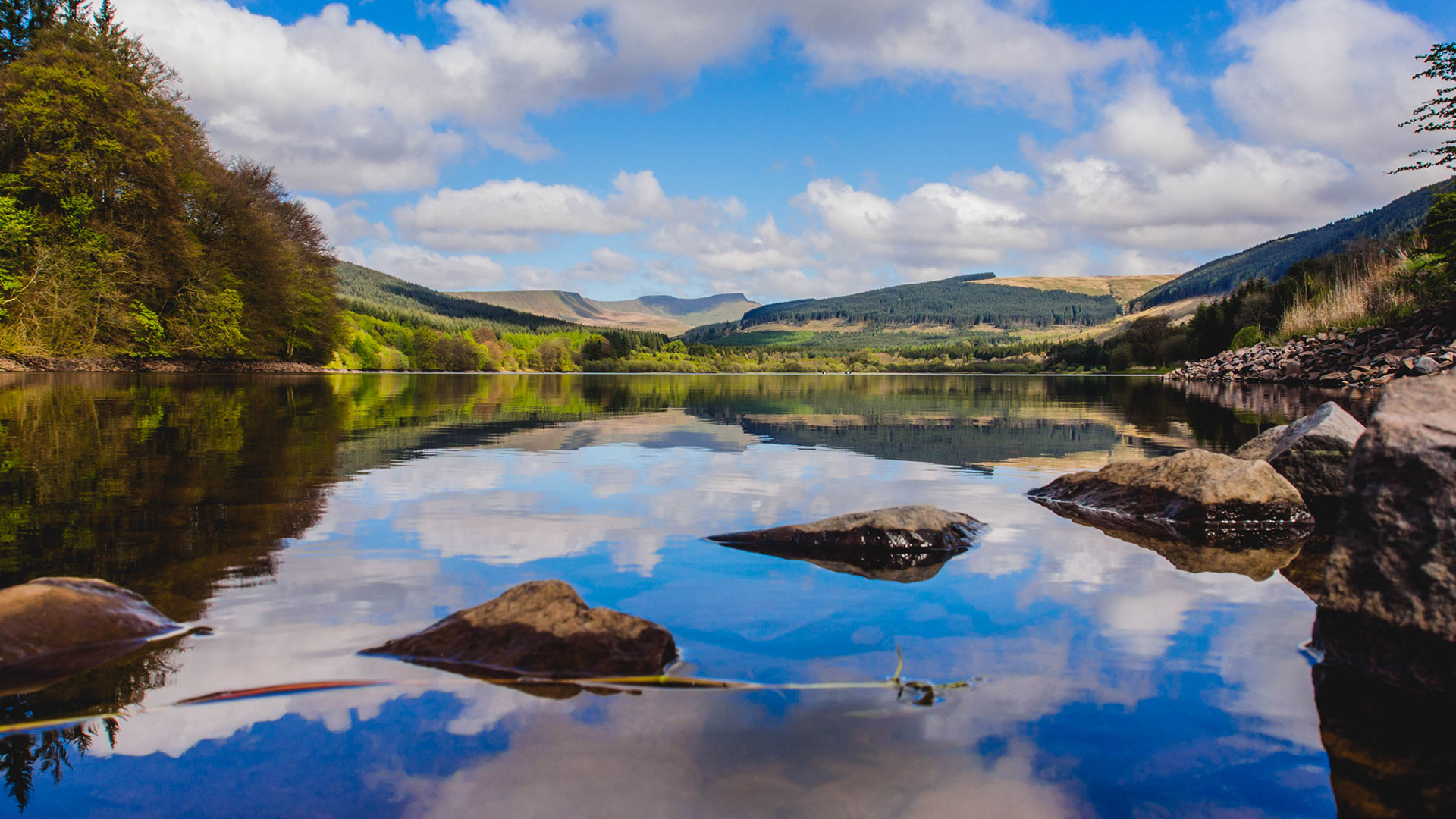The ecological ceiling shows the key components that make up the environmental elements of our first purpose.
For each element we have defined where the boundary of environmental sustainability lies. These are shown as ‘goals’ on the diagram below. We have also identified key indicators that give us a snapshot of where we are and set these in the red boxes against our goals. We then use these indicators to approximate how far we are from meeting these goals, these are the red wedges that extend beyond the green circle, the boundary of sustainability.
2020 saw the publication of the latest Natural Resources Wales State of Natural Resources Report. (SoNaRr) This found that none of the ecosystems in Wales had all the necessary attributes of resilience.
This echoed previous findings from similar assessments, such as the 2018 Living Planet Report from the World Wide Fund for Nature (WWF) which found that wildlife population sizes have fallen globally by 60% since 1970, or the 2019 State of Nature Report which highlighted the loss of 73 species from Wales with a further 666 at risk of extinction.
It is clear from the above snapshot that nature is in crisis and, over the past few years we have learnt more about the extent of habitat and species loss on a global and national scale. In 2020 with the publication of the State of the Park Report we evidenced how this crisis was playing out in the National Park itself.
Take for example our breeding and nesting bird data. Birds are powerful indicators of, and proxies for, good environmental health. Many birds sit at or near the top of terrestrial and marine food chains and understanding the drivers and impacts on their populations gives us an insight into the status of other wildlife. A total of eight ‘red list’ species were shown to be declining by more than 50% in the Park area, including swift, greenfinch, grey wagtail, yellowhammer, curlew, wheatear, and rook. Some of our most familiar birds such as chaffinch and blue tit were shown to decline between 25 – 50%. These declines were seen across multiple species and multiple habitats, which speaks of wide- ranging problems within ecosystems. This could have devastating consequences for humanity.
This story is not unique to the landscapes and habitats of the National Park, but it is an uncomfortable truth given our first purpose requires the organisation to conserve and enhance wildlife in all our activity.
The Royal Society for the Protection of Birds (RSPB) report: A Lost Decade for Nature (2020) not only highlighted the UK had failed to reach any of the Aichi targets set by the UN in 2010 to halt the devastating loss of biodiversity, but more significantly that National Parks and Areas of Outstanding Natural Beauty appear less able than other areas to protect the most significant habitats in their care (p.4).
A study in England found that the condition of Sites of Special Scientific Interest is worse inside National Parks than outside(1). Although a comparative condition assessment inside and outside the National Park boundary has not been completed, we recognise that the condition of SACs (56% in unfavourable condition) and SSSIs (34% of SSSI features were in unfavourable condition) within the National Park is below where we would want it to be in terms of healthy ecosystems, and certainly a very long way from being enhanced.
The reasons for this picture are multiple, but both SONARR (2020) and the WWF Wales’s Nature Crisis (2020) highlight the following as drivers of biodiversity loss within the UK:-
- Agricultural Management
- Climate change









